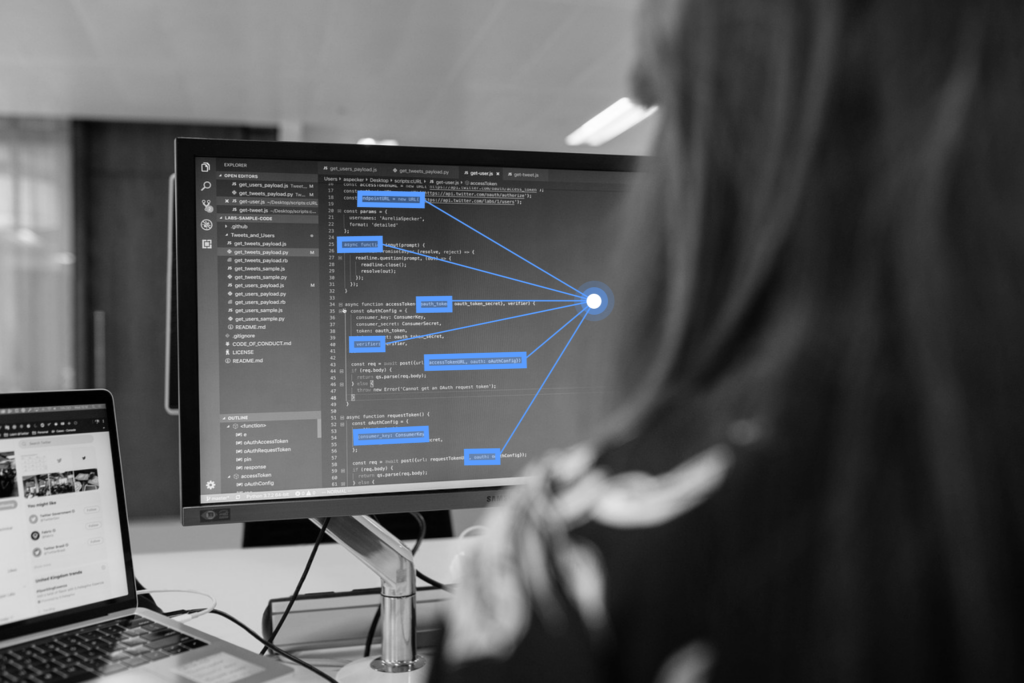
In the realm of Natural Language Processing (NLP), BERT (Bidirectional Encoder Representations from Transformers) and its variants have taken center stage, pushing the boundaries of language understanding. However, fine-tuning these powerful models for specific NLP tasks is a journey filled with challenges and nuances.
In this blog post, we will delve deep into the world of BERT and its variants, exploring the intricacies of fine-tuning, multilingual adaptation, model size trade-offs, and much more. By the end of this exploration, you will gain a profound understanding of how to harness the full potential of these transformative models.

To grasp the significance of BERT and its variants in the NLP landscape, it's essential to understand their historical context and development. BERT, which stands for "Bidirectional Encoder Representations from Transformers," is a groundbreaking natural language processing (NLP) model that has significantly advanced the field of machine learning. BERT and its variants have become pivotal in various NLP applications, revolutionizing tasks such as text classification, sentiment analysis, question-answering, and language translation.
The history of BERT and its variants begins with the Transformer architecture. The Transformer model, introduced in the paper "Attention is All You Need" by Vaswani et al. in 2017, presented a novel way to capture contextual relationships in sequences, making it particularly suited for NLP tasks. The Transformer architecture relies on self-attention mechanisms, enabling it to process input sequences in parallel and capture dependencies regardless of word order.
BERT itself was introduced by Google AI researchers Jacob Devlin, Ming-Wei Chang, Kenton Lee, and Kristina Toutanova in their 2018 paper "BERT: Bidirectional Encoder Representations from Transformers". BERT marked a significant departure from previous models by pre-training a deep bidirectional representation of text. Unlike previous methods that focused on left-to-right or right-to-left context, BERT considered both directions, enabling it to capture the full context of a word in a sentence.
The pre-training process involved training a model on a massive corpus of text data, effectively teaching it the nuances of language and the contextual relationships between words. The resulting BERT model could then be fine-tuned for various downstream NLP tasks with relatively small amounts of task-specific labeled data.
BERT achieved state-of-the-art results on numerous NLP benchmarks, demonstrating its effectiveness in understanding context and semantics. This breakthrough initiated the development of various BERT variants, each with specific modifications and improvements tailored to different use cases. Some notable BERT variants and extensions include:
Although not a direct BERT variant, OpenAI's GPT-2 model, introduced in 2019, shared the Transformer architecture's self-attention mechanisms. GPT-2 demonstrated the power of large-scale unsupervised learning and prompted further exploration into massive language models.
Introduced by Meta AI in 2019, RoBERTa (A Robustly Optimized BERT Pretraining Approach) made several key modifications to the BERT pre-training process, such as larger batch sizes, more training data, and longer training times. These changes resulted in improved performance across various NLP tasks.
XLNet, proposed by Google AI and Carnegie Mellon University in 2019, extended BERT's bidirectional context by considering all possible permutations of word order in the input data. This permutation-based approach offered better performance in capturing complex dependencies but required more computational resources.
In 2019, researchers from Google Research introduced ALBERT (A Lite BERT), aiming to reduce the computational requirements of BERT while maintaining performance. ALBERT employed parameter-sharing techniques and model compression to achieve a significant reduction in the number of model parameters.
T5, presented by Google Research in 2019, introduced a unified framework where every NLP task, including text classification, translation, summarization, and question-answering, was framed as a text-to-text problem. This approach streamlined the model architecture and achieved impressive results on multiple tasks.
Hugging Face introduced DistilBERT in 2019, which aimed to distill the knowledge from a large BERT model into a smaller, faster model while retaining performance. This made BERT-based models more accessible for resource-constrained applications.
Developed by Baidu, ERNIE integrated structured knowledge from the web to enhance language understanding. It performed well in various cross-lingual and multitask learning scenarios.
The continuous evolution and development of BERT and its variants have played a pivotal role in advancing the field of NLP. These models have enabled researchers and practitioners to achieve remarkable results on a wide range of language understanding tasks, making NLP more accessible and powerful for various applications, including chatbots, virtual assistants, content recommendation systems, and much more.
As NLP research continues to evolve, BERT and its variants remain at the forefront of language model innovation. You can explore the early roots and evolution of these models in this enlightening article.
Read more: How to develop a good chatbot and Voice assistants: your guide from history to the future and beyond

Fine-tuning BERT and its variants for specific NLP tasks is both an art and a science. In this section, we will dive into the challenges and nuances of the fine-tuning process. This includes issues related to data preparation, hyperparameter tuning, and the delicate trade-offs involved in fine-tuning.
Transfer learning with fine-tuning on NLP models, exemplified using BERT, demonstrates how pre-trained language models can be adapted for specific tasks. BERT, a state-of-the-art model developed by Google, excels at capturing contextual relationships and word meanings within text. In this example, we explore the process step by step.
The process begins with importing necessary libraries and a dataset with an explicit train-test split. The `transformers` library is used for BERT, and 'torch' for PyTorch functionalities. We load the pre-trained BERT model ('bert-base-uncased'). Tokenization is a vital NLP step, where input texts are converted into numerical representations understandable by BERT. The 'BertTokenizer' splits text into tokens, adds special tokens, manages sequence length, and generates attention masks. In this example, we have two input texts - one positive and one negative review - with corresponding labels (1 for positive, 0 for negative).
Next, we tokenize and encode the data, creating input_ids and attention_masks for the BERT model. These tensors are crucial for processing. Labels are also converted into tensors. Fine-tuning the BERT model involves adapting it to a specific task with labeled examples. We define an optimizer (AdamW) and a loss function (CrossEntropyLoss). The model is set to training mode with `model.train()`. A training loop runs for a specified number of epochs. Within each epoch, the dataset is iterated through in batches. Gradients are cleared with `optimizer.zero_grad()`, and then, the model is optimized using backpropagation.
The model predictions are generated using a test set, and `model.eval()` is used to switch to evaluation mode. For each test text, tokenization and encoding are performed. Predicted labels are obtained by identifying the class with the highest logit value. In this example, two test texts are provided, and both are predicted as label 1, which indicates a positive sentiment.
In summary, transfer learning with fine-tuning using BERT involves importing libraries, loading a pre-trained BERT model, tokenizing and encoding data, fine-tuning the model on a specific task, and generating predictions. This process leverages the extensive knowledge pre-trained in BERT to adapt it for classifying positive and negative comments. Such transfer learning techniques have revolutionized NLP, allowing developers to achieve state-of-the-art results with relatively small, task-specific datasets and making NLP applications more accessible and efficient. For a comprehensive exploration of fine-tuning, including practical tips and insights, refer to these valuable resources: GeeksforGeeks and Towards AI.
Read more: Unlocking the power of transfer learning and pre-trained language models and Exploring Transformer models and attention mechanisms in NLP
BERT, originally designed for English, has been adapted for multilingual NLP tasks. However, using BERT and its variants effectively with languages other than English presents complex challenges. In this section, we will explore how BERT models can be adapted to work effectively with diverse languages and the unique challenges that arise in maintaining performance across linguistic diversity.
Multilingual challenges and adaptations are integral aspects of the ever-expanding field of NLP. Handling multiple languages presents a myriad of challenges, primarily stemming from the vast linguistic diversity across the globe. Each language possesses its own unique characteristics, grammatical structures, and vocabularies, making it challenging to develop NLP models that can seamlessly work across all languages.
Moreover, the availability of labeled data, essential for training these models, is often limited, particularly for less commonly spoken languages, posing a significant obstacle. Additionally, training NLP models for multiple languages can be resource-intensive, demanding substantial computational power and storage capacity (Check out our data sourcing and off-the-shelf datasets).
To address these multilingual challenges, various adaptations and innovations have emerged. Pre-trained multilingual models like mBERT and XLM-R have been developed, offering a foundational basis for tackling multilingual NLP tasks. These models are trained on diverse language datasets and provide a starting point for building applications that transcend language barriers.
Cross-lingual transfer learning techniques enable NLP models to generalize their knowledge across languages, leveraging shared linguistic features. Techniques such as data augmentation, language identification, domain adaptation, and ethical considerations are also essential components of the adaptation process.
Furthermore, collaborative community efforts and information sharing within the NLP field play a pivotal role in collectively addressing the challenges posed by multilingualism, ultimately advancing the development of inclusive and globally impactful NLP applications.
In conclusion, multilingual NLP, while laden with challenges, offers immense potential in a world characterized by linguistic diversity and global communication. Overcoming language barriers, data scarcities, and resource constraints through innovative adaptations and cooperative endeavors can pave the way for more inclusive and effective multilingual NLP solutions.
As technology continues to evolve, these adaptations contribute to the development of NLP applications that transcend linguistic boundaries, fostering cross-cultural understanding and knowledge dissemination on a global scale.
Read more: Multilingual Natural Language Processing: solutions to challenges; How to leverage labelling to enhance accuracy in Automatic Speech Recognition; and Unraveling the lack of standardization in speech recognition data
One of the defining features of BERT models is their large size, which brings both advantages and challenges. In this section, we will investigate the trade-offs associated with large model sizes. Discuss the computational challenges of training and deploying such models and explore strategies for optimizing performance on resource-constrained environments. For a deeper dive into understanding BERT variants and their implications, you can read this Medium article.

BERT and its variants have revolutionized NLP, offering incredible capabilities for understanding and processing human language. However, fine-tuning these models and adapting them for multilingual tasks come with their own set of challenges.
Moreover, the size of these models can be both a boon and a burden. By navigating the complexities and nuances explored in this blog post, you will be better equipped to harness the transformative power of BERT and its variants in your NLP endeavors. As we look to the future, we anticipate even more exciting developments in this ever-evolving field.
If you're passionate about BERT and its variants, reach out to us. Your insights, questions, and collaborations are essential in driving the field of NLP forward.